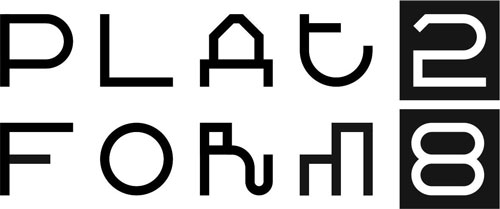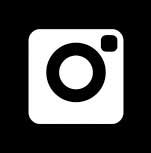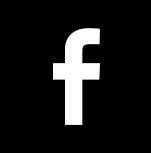>MADE IN TEHRAN #02
>COLLECTING TEHRAN: Tehran Urban Life Museum
>Instructors: Carlotta Werner, Moritz Walter
> Sponsor: Behman Design
COLLECTING TEHRAN was a one week workshop that aimed to create a multiperspective city portrait through three-dimensional object collages of collected everyday objects. Opposing the general propagandist approach of museums, each collage expressed the special character and emotional value of one chosen place in the city. The objects composed in the vitrines told individual stories about what Teheran is like in daily life and through eyes of the commons.
Etymologically, the word “museum” has always been related to higher powers. It is originated from the Latin word Μουσεῖον that refers to a place dedicated to “patron” divinities. A close study of major museums all over the world reveals they support a very strong political and power-related agenda. Museums in Tehran are no exception. Like the recent history of Iran, these museums are categorized into two distinctive groups:
a- Museums that were built before the Revolution, promoting the concept of kingship by depicting a glorious image of the Great Persian Empire.
b- Museums that were built or reoccupied after the Islamic Revolution, picturing either the glory of the republic or the hardship imposed by an eight year war between Iran and Iraq that happened after the revolution.
Accordingly, we can include museums such as the Museum of Contemporary Art, Ancient Iran, Abgineh, Carpet, Jewellery and many more in the first category, where either the architecture of the building or the museum collection has close ties to an amplified concept of a glorified Persian Empire. On the other hand, museums such as the Holy Defence, Edification, Martyrs or a selection of former palaces are representatives of the second category, where revolutionary acts and patriotic deeds are celebrated. Neverthless, none of these museums are about common individuals who are the main pillars of any society. In conclusion, the aim of this workshop was to bring to our attention this missing link by highlighting the “ordinary”.
Following instructors guidelines, each participant produced one to two museum-like showcases. These guidelines explained how to choose a public or semi-public location (minimum one room to maximum area of 1x1 km) in Teheran that reveals a personal value for the participants and gather data through the collection of objects that belong to these sites and are thought to characterize them. As per the instructors’ request, these objects should have presented something soft and something rough, something old and something new, as well as something that was given to the participants by individuals from the site. Above all, each collection should have a quality of inspiring the curiosity of the spectators, presenting the main color of the site, and consist of eight objects and one photo that best describe the site . “Participants should have the ability to create a spatial collage using the depth of the showcase for creating a fore- and background, creating tension by composing different or similar objects (in size, proportion, material, surface, colour) and highlighting key objects,” said Carlotta Werner and Moritz Walter, the two designers from Germany who led the Collecting Tehran. The workshop was part of a series that happened in multiple cities during their six month journey throughout the Middle-East and Africa.
INSTRUCTORS’ PROFILES:
Carlotta Werner is a German product designer focused on exhibition design and sustainable design in development aid. Her work ranges from the Museum of Innocence for Orhan Pamuk in Istanbul to award-winning cook stoves for Africa.
www.carlottawerner.de
Moritz Walter works as an architect for public buildings in the existing fabric. For Sunder-Plassmann Architects, he recently finished the redesign of art halls and museums like the Deichtorhallen in Hamburg.
Werner and Walter both share an interest in museums and collecting as a cultural phenomena.
www.sunder-plassmann.com
>COLLECTING TEHRAN: Tehran Urban Life Museum
>Instructors: Carlotta Werner, Moritz Walter
> Sponsor: Behman Design
COLLECTING TEHRAN was a one week workshop that aimed to create a multiperspective city portrait through three-dimensional object collages of collected everyday objects. Opposing the general propagandist approach of museums, each collage expressed the special character and emotional value of one chosen place in the city. The objects composed in the vitrines told individual stories about what Teheran is like in daily life and through eyes of the commons.
Etymologically, the word “museum” has always been related to higher powers. It is originated from the Latin word Μουσεῖον that refers to a place dedicated to “patron” divinities. A close study of major museums all over the world reveals they support a very strong political and power-related agenda. Museums in Tehran are no exception. Like the recent history of Iran, these museums are categorized into two distinctive groups:
a- Museums that were built before the Revolution, promoting the concept of kingship by depicting a glorious image of the Great Persian Empire.
b- Museums that were built or reoccupied after the Islamic Revolution, picturing either the glory of the republic or the hardship imposed by an eight year war between Iran and Iraq that happened after the revolution.
Accordingly, we can include museums such as the Museum of Contemporary Art, Ancient Iran, Abgineh, Carpet, Jewellery and many more in the first category, where either the architecture of the building or the museum collection has close ties to an amplified concept of a glorified Persian Empire. On the other hand, museums such as the Holy Defence, Edification, Martyrs or a selection of former palaces are representatives of the second category, where revolutionary acts and patriotic deeds are celebrated. Neverthless, none of these museums are about common individuals who are the main pillars of any society. In conclusion, the aim of this workshop was to bring to our attention this missing link by highlighting the “ordinary”.
Following instructors guidelines, each participant produced one to two museum-like showcases. These guidelines explained how to choose a public or semi-public location (minimum one room to maximum area of 1x1 km) in Teheran that reveals a personal value for the participants and gather data through the collection of objects that belong to these sites and are thought to characterize them. As per the instructors’ request, these objects should have presented something soft and something rough, something old and something new, as well as something that was given to the participants by individuals from the site. Above all, each collection should have a quality of inspiring the curiosity of the spectators, presenting the main color of the site, and consist of eight objects and one photo that best describe the site . “Participants should have the ability to create a spatial collage using the depth of the showcase for creating a fore- and background, creating tension by composing different or similar objects (in size, proportion, material, surface, colour) and highlighting key objects,” said Carlotta Werner and Moritz Walter, the two designers from Germany who led the Collecting Tehran. The workshop was part of a series that happened in multiple cities during their six month journey throughout the Middle-East and Africa.
INSTRUCTORS’ PROFILES:
Carlotta Werner is a German product designer focused on exhibition design and sustainable design in development aid. Her work ranges from the Museum of Innocence for Orhan Pamuk in Istanbul to award-winning cook stoves for Africa.
www.carlottawerner.de
Moritz Walter works as an architect for public buildings in the existing fabric. For Sunder-Plassmann Architects, he recently finished the redesign of art halls and museums like the Deichtorhallen in Hamburg.
Werner and Walter both share an interest in museums and collecting as a cultural phenomena.
www.sunder-plassmann.com

















